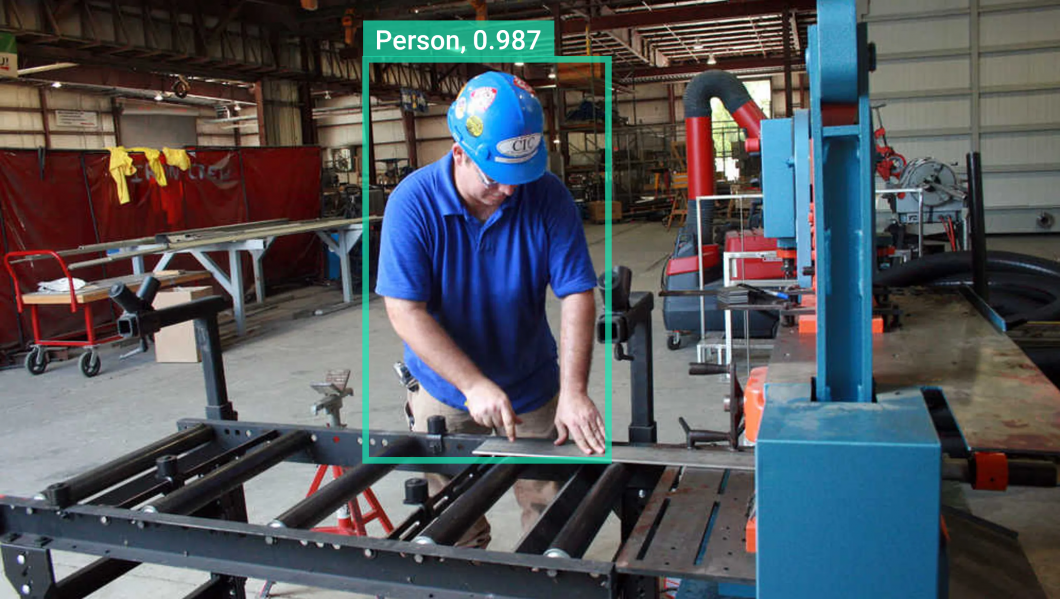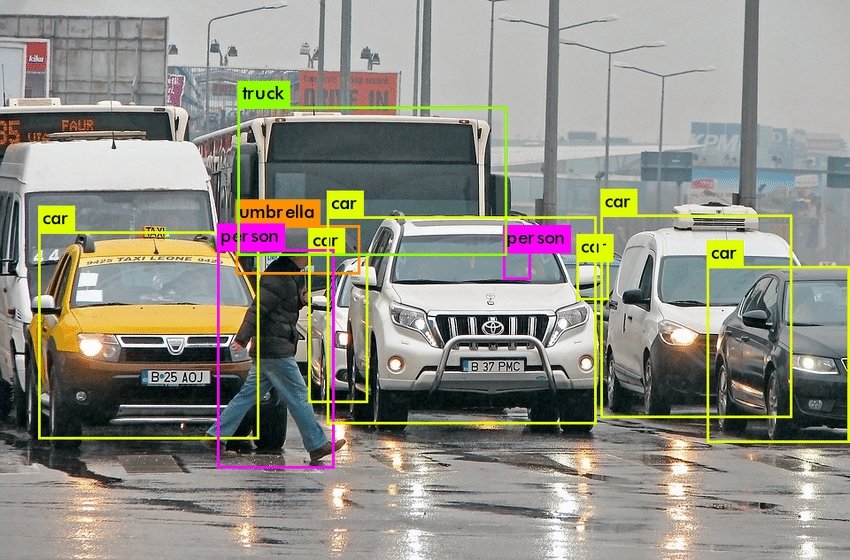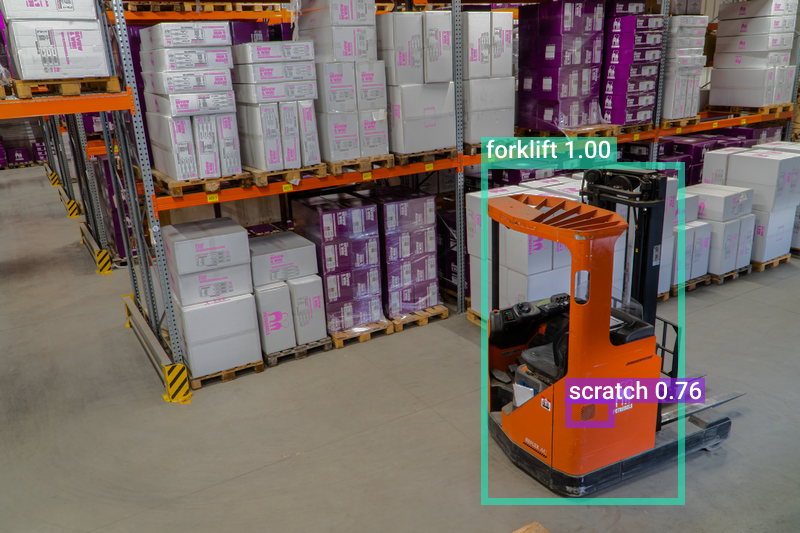Computer vision engineering lies at the intersection of artificial intelligence and machine learning. A computer vision engineer’s purpose is to help computers “see” – through the use of deep/machine learning and mathematical architectures in code.
A computer vision engineer, or CV engineer, is also a computer science professional who often uses software to handle the processing and analysis of large visual data populations to support the automation of predictive decision-making.
Why is Computer Vision important?
Computer vision is a rapidly popularized field of artificial intelligence that is becoming increasingly used in technology industries and startups. This technology relates to computers not only being able to visualize images but also extracting the message or purpose of that image, such as determining distances and movements of incoming objects.

These companies and startups introduced AI vision successfully in medicine, defense, manufacturing, and various types of monitoring. Common use cases of computer vision include biotechnology, where it is used for skin cancer detection, gene editing, and more. In addition, AI vision has broken invaluable ground in the medical industry, for example, where it is an extremely useful technology in diagnosis implementations.
Computer vision is also useful for numerous other applications, such as in sports, retail, agriculture, transportation, manufacturing, and more. For a larger and more in-depth list of posts on computer vision applications, we recommend reading The Most Popular Computer Vision Applications, an article that delves deeply into fast-growing and progressive computer vision applications used across industries.
What is a Computer Vision Engineer?
Computer vision engineers apply computer vision and machine learning research to solve real-world problems. Their work uses large sums of data and statistics to complete complex tasks and apply supervised or unsupervised learning as part of computer vision tasks. Also, CV engineers are tasked with spending much of their time researching and implementing machine learning and computer vision systems for their client companies and overarching corporations.
The engineers work closely with other personnel, often in fields outside of computer science, to facilitate the implementation of novel embedded architectures in existing programs and devices. Computer vision engineers generally have a significant amount of experience with a variety of systems, such as image recognition, machine learning, Edge AI, networking and communication, deep learning, artificial intelligence, advanced computing, image annotation, data science, and image/video segmentation.

What does a Computer Vision Engineer do?
Computer vision engineers can automate various functions using programming that the human visual system can do to fulfill a task, like creating the adaptive cruise control features on a car. The tasks required of computer vision engineers often involve skills dependent on linear algebra math libraries and a foundational understanding of algorithms and mathematical processes. Furthermore, prosperous CV engineers will need to have various software skills in the areas of database management, development environment, and component or object-oriented software and programming languages.
Computer vision engineers are often asked to multitask and focus on more than one objective at once. The job requires working efficiently in a collaborative setting. Like many other careers in computer science, computer vision engineering requires high levels of self-motivation and the ability to coordinate with other teammates.
Analytical and critical-thinking skills are important because these engineers work on complex problems and must be able to analyze results to make accurate conclusions. Logical thinking, clear reasoning, and being detail-oriented are critical skills in a computer vision engineer position because of the short deadlines and amount of research and programming-related work required of computer vision engineers.

Skills of a Computer Vision Engineer
There is a primary set of skills needed to land a computer vision engineering job in the industry. Of course, higher-level positions in the computer vision field require more than this set, but this is the bare minimum that job recruiters would look for when hiring a computer vision engineer.
Because Deep Learning models are utilized in different platforms and environments, CV engineers need to have experience in at least one language and be at an intermediate level in two or more other languages.
Every computer vision engineer is required to have the ability to:
- Develop image analysis algorithms: For example, algorithms allow programs to recognize and classify images into categories.
- Develop Deep Learning architectures to solve problems: Deep learning is a sector of artificial intelligence used by computer vision engineers to create powerful image recognition or video analysis models.
- Design and create platforms for image processing and visualization: Aside from building architectures and using algorithms, computer vision engineers are often tasked with helping or assisting developers of the hosts of computer vision models, which involves the designing of apps, websites, or devices that will run computer vision models.
- Use knowledge of computer vision libraries: Since computer vision engineers use programming and coding to create computer vision models, their job descriptions often require them to be comfortable with libraries specific to the computer vision task at hand.
- Understand dataflow programming: Dataflow programming is a programming feature that models a program as a directed graph of the data flowing between operations and involves implementing dataflow principles and architecture.
In addition to the above skills, you’ll also likely need at least a bachelor’s degree in mathematics, computer vision, computer science, machine learning, information systems, or other related fields of study.
The Job Outlook
Jobs in artificial intelligence and machine learning have been steadily rising as companies’ need for such engineers proportionally increases. According to the United States Bureau of Labor Statistics, jobs for computer and information research scientists are expected to grow by 22% between 2020 and 2030.
This growth rate is substantially greater than many other occupations in the current global economy. Software engineering jobs have been on the rise more than others because of up-and-coming computer vision companies building cutting-edge AI hardware and software that are new and require many people to develop. Computer vision engineering, however, is a niche field that requires highly specialized experts.
Consequently, while all individuals aiming for a job in computer vision may not receive an offer, their options in general machine and deep learning, and artificial intelligence, also remain existent and viable.
With the prevalence of remote work and telecommuting, computer vision developers are increasingly being allowed to work remotely. As a result, many developers are now able to work from the comfort of their own homes, having access to all the tools and resources they need to get the job done.
Working at viso.ai
At viso.ai, we are a team of computer vision and machine learning experts dedicated to building cutting-edge computer vision infrastructure. We are always looking for new talents to join our global team, and we offer remote positions.
As a Viso, you get to gain first-hand experience with running and scaling complex computer vision systems in production. And you get to work on a variety of projects across different industries and locations in the world. We work in partnership with some of the biggest technology companies. Our partners include Intel, Nvidia, Amazon AWS, Samsung, HP Enterprise, and more.
To join viso.ai as a computer vision engineer, find our open positions here.
What’s Next With Computer Vision Engineering
Computer Vision and visual AI technologies drive the demand for Computer Vision engineering experts, and things are likely to be this way for the years to come. New technical concepts such as Edge AI and AIoT allow computer vision to be broadly implemented. As a result, new use cases become feasible in an even wider range of industries, from healthcare and pharmaceutical to logistics, sports and fitness, or smart cities.
If you enjoyed this article, we suggest you read:
- Next-gen Low-code Software Development for Deep Learning and AI Vision
- Moving from the Cloud to the Edge – why the Cloud is not enough
- Read about Data Preprocessing Techniques for Machine Learning with Python
- Artificial Intelligence of Things (AIoT) – Current Trends and Applications



